How Wool Dryer Balls Really Work to Save Money and Protect Family Health
You know, commercial fabric softeners can be sneaky troublemakers, causing more harm than good. But here’s the good news: wool dryer balls work wonders, softening clothes, slashing drying time, and kicking those harmful chemicals to the curb. Trust me, once you switch, you’ll wonder why you didn’t do it sooner.
A previous post on why laundry softening products are a real problem continues to resonate with thousands of readers. I know because of your many relating your experiences and testimonials about switching from problematic laundry softeners to wool dryer balls.
Dear Mary: My husband and both of my children have chronic skin problems. One doctor diagnosed them with eczema, but curiously nothing, including prescription medications, have brought lasting relief. We have spent a small fortune going from one dermatologist to another not to mention all of lotions, potions and other medications prescribed. Not once did any of these professionals suggest they might be allergic to laundry softeners. When I read Commercial Fabric Softeners are the Problem (Here is the Solution), a lightbulb went on.
I’m a serial softener user. For years, I’ve used liquid softener and dryer sheets just to make sure. How could I have not thought about this? It made a lot of sense that they could be allergic to this stuff. I wasted no time getting the wool dryer balls you recommend. I gave up softener products cold turkey and began using the dryer balls instead. I was like a crazy woman washing and re-washing clothes and bedding. I got three gallons of white vinegar to make sure I had enough to add to every rinse cycle.
Within two weeks we began to see a change. The rashes, itching and horrible skin issues began to calm down. Within three weeks the change was amazing. As I write, I would say my kids and husband are finally free of this awful situation. As embarrassed as I am that I never considered this might be the problem, I am more grateful and happier than you can imagine. Thank you so much for all you do to improve our lives. That column changed our lives and we are forever grateful. Gina
The trouble with commercial fabric softeners
The National Center for Biotechnology Information reports that the perfumes and additives in laundry products may cause skin problems. Fabric softeners are allergenic and can cause eczema, which appears as dry, itchy skin.
Dryer sheets contain fragrance and volatile organic compounds like acetaldehyde and butane, which can cause respiratory irritation. Fabric softener chemicals known as quaternary ammonium compounds have been linked to asthma. Acetone, also used in dryer sheets, can cause nervous system effects like headaches or dizziness.
Fabric softeners are also known to reduce and finally eliminate the effectiveness of water-resistant materials and reduce the absorbency of terry cloth and microfiber towels.
If you find your towels aren’t drying as well after a few cycles with fabric softener—liquid softener in the washer and/or dryer sheets in the dryer—it’s time to find a better alternative that will give excellent results, cost less, and all without doing harm.
Why use wool balls in the clothes dryer?
Wool dryer balls reduce wrinkles, speed up drying times, and soften clothes. They are the best alternative to commercial fabric softening products, such as liquid fabric softener added to the last rinse cycle in the washing machine and dryer sheets in the clothes dryer.
These things look like overgrown tennis balls. They’re made of 100% wool yarn, which over time becomes “felted*,” making them incredibly durable and not at all prone to unraveling.
One set of quality wool dryer balls will last what seems like forever, softening hundreds of loads of laundry—no batteries, refills, repairs, or reconditioning required. It’s one (purchase) and done!
*Felting is a process that causes a natural fiber felting yarn, like wool, to fray slightly and fuse to the other fibers around it, creating a more solid fabric-like appearance.
How do wool dryer balls work?
Imagine a big load of wet bath towels going into the dryer. You hit “start,” and that massive wad of wet fabric will flop around and stick together for quite a while until the layers become dry enough to separate and allow warm air to circulate. That slows the drying time, wasting time and energy.
Now imagine six wool dryer balls bouncing around (I use my entire set of six in every load), working their way between the layers of fabric, separating them so the warm air can circulate efficiently right from the very start of the cycle.
I’ve tested drying times with and without wool dryer balls, and the results are quite impressive. Wool dryer balls cut at least 25% off the time it takes my clothes dryer to dry a load of laundry, saving time and energy.
I often find these balls stuck tightly in the long sleeves of a tee shirt and the pocket of a pair of jeans. They work their way into tight spaces, and that’s what makes them so awesome.
Because dryer balls also agitate against the fibers in clothes and linens, everything feels softer coming out of the dryer. When used correctly (coming up), they also remove static cling.
How to use dryer balls
Because they need room to bounce and play with wet clothes and linens, dryer balls do their best and fastest work when the dryer is not crammed full. Two medium-sized loads will dry faster and more efficiently than one gigantic load. Dryer balls need room to work. And the more balls you add to a dryer load, the faster they get the job done.
Adding fragrance to a dryer load
Some of you have written saying you really miss the lovely fragrance you had when using dryer sheets. If this is important to you, here are much healthier and better alternatives than dryer sheets.
Solutions
Essential oil. Add a few drops of essential oil to each of the dryer balls. Give them time to absorb the oil deep into the fibers—a few hours is advisable. The more the oils are absorbed into the dryer balls before using them, the more slowly the fragrance will be dispersed in the dryer. You’ll begin to notice a subtle, non-toxic fragrance in your clean, soft laundry. When attempting the essential oil solution, set the dryer to Warm.
Downy Unstopables. Maybe you’ve seen Downy Unstopables (teeny tiny little scent beads) in the laundry aisle. The label directs you to add something like 1/4 cup (!!) to the washer along with your detergent. Oh, NO! That’s way overkill if you are at all sensitive to fragrance.
I’ve experimented with only two (2) of those tiny little beads in the wash load (not the dryer). That load of wet clothes, when added to the dryer along with wool dryer balls, comes out with just the slightest, lightest fresh scent.
Static cling
The biggest complaint I have received from readers is that while dryer sheets would eliminate static cling, the wool dryer balls do not. In fact, reported several (thousand) people, static cling makes these folks want to throw the balls out and go back to the old dryer sheets. Don’t do that! There is an explanation and a simple solution.
Much of the reason static occurs is due to over-drying clothes. You will definitely notice static if the dryer is allowed to run too long, with or without wool dryer balls!
Overdrying wastes gas or electricity and prematurely wears out clothes, as evidenced by all that lint. As you are learning, it also causes static cling—especially on low-humidity, dry winter days.
Another cause of static is synthetic materials like polyester, nylon, rayon, and acrylic. Try to separate synthetics to keep the rest of your laundry static-free. Then either dry the synthetics by hanging them on a line or in the dryer, making sure you end the drying cycle before they are totally dry.
Solution
Here’s what I do because I do not have the time to stand in the laundry room watching and waiting for things not to become over-dried: I spray my wool dryer balls with water (dunking them in a container of water also works), to get them super quite wet. Now the laundry dries faster than the wool dryer balls because they are so dense, elevating the humidity level in the dryer. Works like a charm and does not harm the dryer balls in any way. This method does not seem to increase the drying time, either.
White lint transfer
One thing I noticed early on in my transition from dryer sheets to wool dryer balls was lint. Small bits of white lint showed up on dark-colored clothes even though there were no white items in that dryer load. It didn’t take long to realize that the dryer balls were harboring those bits and transferring them to the dark load.
Solution
I have two sets of dryer balls—one set is white, the other black. It’s easy to see which ones I need to throw into the dryer. Now, any white lint stays with the white dryer balls, and dark lint links with the dark set. Problem solved.
As I update this post, my white set of dryer balls is going on eight years old. I haven’t counted how many loads of laundry they have fluffed and softened, but it’s many.
Manufacturers say one set of quality wool dryer balls is good for at least 1,000 drying loads. That means mine should have plenty of life left in them. It just might be the best money I’ve ever spent!
Resources
Wool dryer balls are readily available in stores like Walmart, Target, and Amazon. Here are links to the two sets of quality wool dryer balls I purchased online and have been using for years (during which time I have NOT spent hundreds of dollars on gallons of liquid softeners and cases of dryer sheets!).
Are you crafty?
You can make your own wool dryer balls. Find a tutorial here.
You might also enjoy …
- 5 Ways to Make Safe, Problem-Free Fabric Softener
- How to Make Wool Dryer Balls
- How to Make the Best Homemade Laundry Detergent
EverydayCheapskate™ is reader-supported. We participate in the Amazon Services LLC Associates Program and other affiliate advertising programs, designed to provide a means for us to earn from qualifying purchases, at no cost to you.
More from Everyday Cheapskate
Please keep your comments positive, encouraging, helpful, brief,
and on-topic in keeping with EC Commenting Guidelines
Last update on 2024-04-20 / Affiliate links / Images from Amazon Product Advertising API

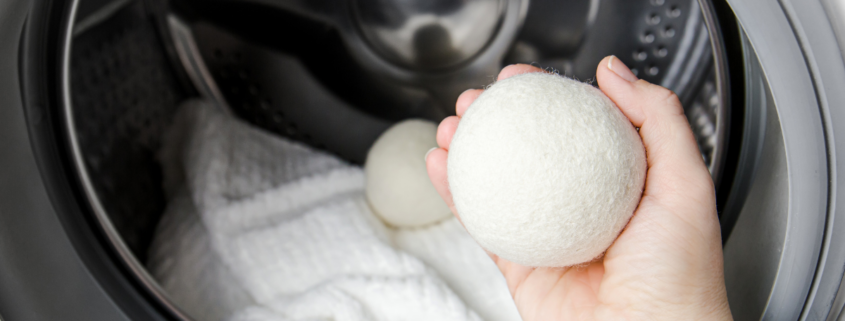




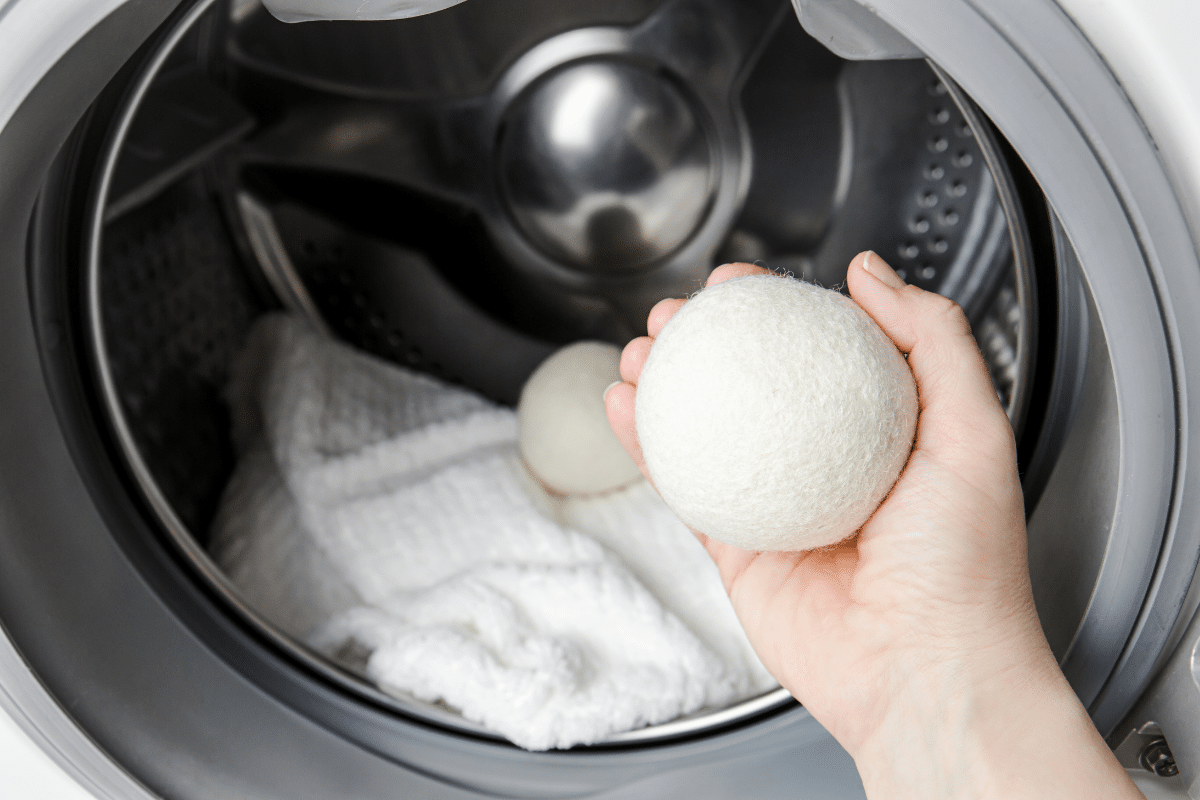





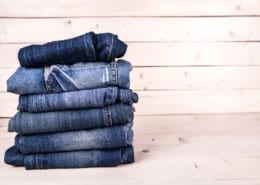
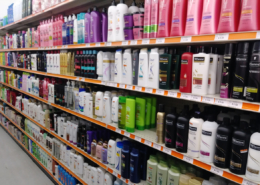

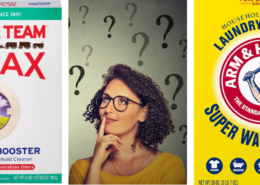





I’ve been using wool dryer balls for several months. I’ve had very little static cling & I’ve been very pleased with their performance. I leave the balls in the dryer and take them out only as I come across them when pulling out dry clothes. The only down side is if one wool ball gets caught in a sleeve or pocket and I don’t know it, that ball can end up rolling under things; so now I am more careful checking for a wool ball as I pull out each piece out of the dryer. I’ll never go back to dryer sheets!
Do you have any idea why they would stop being useful after 1000 loads? After all, they will still bounce around in the dryer and do the same job? Is it something about lanolin? Any help appreciated.
Thanks Mary. ‘I am a Tightwad Gazette devotee. Sadly, it’s gone. And my Hints from Heloise is now a vintage book. I just bought a set of 4 New Zealand wool balls at Trader Joe’s for $5.49. (Aprii, 2021) Thanks for great info !!
And … Everyday Cheapskate (founded in 1992 as Cheapskate Monthly) is still alive and well!
I bought a set of 4 wool dryer balls at Trader Joe’s for under $5. Love them!
I love my dryer balls but hate the static cling. To get rid of it, take a sheet of aluminum foil about 5 or 6 feet and wad it into a ball. Toss it in the dryer with your wet clothes and dryer balls. With each load the ball of aluminum foil will become smaller and more compressed. When it gets down to an inch in diameter, toss it in your recycling bin and make another one. It works like magic! No more static cling.
Mary, i have been using these dryer balls for years. have not had to replace them yet. no longer use clothes softener. i believe i originally got the tip from u. thanx, Mary
I have been using dryer balls since I think you first mentioned them. Got mine on Amazon. I also add essential oils to the balls when I start the wash. Love the light scent, sometimes unnoticeable. I usually use around 2TBSP of Unstoppables in the wash. I appreciate you mentioning only 5!!! Not sure I can do that, but will try. Thanks for the money saving tip.
I have been using wool dryer balls for several years now and while I believe they do help to dry the clothes a bit faster I don’t think that the clothes are at all softened so I still like to add liquid softener to my loads.
I have been using wool dryer balls for over a year and love them. Our daughter and son in law are expecting our first Grandchild in June and both of them have very sensitive skin so we are anticipating the baby will as well. So I bought them a set and they are hooked.
Residue from dryer sheets tends to coat the ductwork leading from the dryer. Then lint often sticks to the coating. The result: fire danger. This warning from a worker who cleaned all of our ductwork years ago. Warning was echoed by my son, a firefighter!